DAY 1, Nov 9, 2018, FRIDAY: Flying into Athens airport; collecting rental car
To start off our 17 day vacation, I
landed in Athens at noon on Nov 9th, went through passport
control, collected my bag and waited at the meeting point in the
Arrivals terminal at the airport.
Arrivals are in the ground floor and
departures in the floor above.
Son's flight landed 1 ½ hours later,
he had already done passport control during transfer at Frankfurt.
The transfer had been pretty tight though he had more than 1 hour 50
mins layover, just one counter operating, big crowd etc. There was a
delay; he had had to run and board his flight to Athens as the last
person and his bag had to be gate checked. So he collected his bag at
Athens and met up with me around 2.
We were staying at a place in Spata
(4km from airport). The owners had promised free pickup. We had
booked a car at the airport to be collected at 5 pm and planned an
early start the next day. We decided to collect the car early and
drive on our own to our B&B. Enterprise charged extra for early
collection but we felt the convenience was worth it.
Son had already seen the street view of
the drive to our B&B. We had a smooth drive and reached our B&B
in a lovely quiet neighborhood.
ACCOMMODATION: Lepa Kuca, Spata (4km from airport):
We had booked 3 separate one night
stays at Lepa Kuca. [The last one was cancelled by the hotel citing
health emergency few hours before check in. We wish the owners good
health as they are both lovely people! We are a little annoyed by the
late intimation by Booking com which made us scramble to book an
airport hotel to report to our 7 am flight next day back home to the
US]
Nov 9-10 was the first of our stays... started off a little rocky but turned out pleasant later.
We parked in front of the house,
knocked... no answer. We tried calling the owners by phone... our phone was not booting.
We saw a key on the back door; we
opened it and entered a musty unkempt room with stairs leading up. We
yelled out Hello, till a caretaker answered, but did not come down
to meet us. The owner walked in thru the front door a few minutes
later, was surprised to see us standing and yelled at his care taker.
He asked us to wait outside on the lovely porch.
Once he opened up
our apartment next door everything was fine.
Amelia was as courteous as her husband. She came by with a wine bottle for us which we declined politely as we don't drink.
We paid up cash for our stay. When
asked about time of breakfast, we requested vegetarian Breakfast at 6 am as we wanted to start early. Should have asked for stuff to be given the same evening so that it'll be easy on both parties.
We drove down to nearby Lidl and stocked up provisions for our trip.
Had the home made paratas I pack for all our travels with tomato relish
and supplemented with the icecream and fruits we had bought at Lidl.
Milk, yogurt, juice, olives, olive oil, bananas, tomatoes, zucchini, chocolates, icecream from Lidl...
Called it a day and slept off by 7.30 pm with eager anticipation of our impending holiday!
DAY 2, Nov 10, 2018, SATURDAY:
Athens airport
(203km)Delphi(235km)Meteora
We got up early and got ready for an
early start. Agenda was to drive to Meteora with detours to Hosios
Loukas monastery and Delphi. [ too much for the day in November as we would
realize when darkness set in before we reached our final destination]
There are at least 7 places called
Meteora in Greece.So for Meteora on E952 we need to program in Lamia then
Karditsa then Trikala before Meteroa. (Meterora Kalampaka 422 00).
This was our route:
This was our route:
We waited for breakfast at 6 am. It was
delayed by 20 minutes. The eggs were tasty, just one slice of bread
per person. Juice, milk were fine.
We locked the house, left the key in
the door as they had specified.
It was a lovely drive. Here are sheep on the road...
Monastery of Hosios Loukos:
On our way up to the slopes of Mt. Parnassos and the archaeological site of Delphi, about 13 km before the town of Aráhova, we left the main road and turned towards the village of Distomο and Stýri. Reached the Byzantine monastery of Òssios (Saint) Loukás, situated in a picturesque valley teeming with olive trees.
The monastery was founded around the
middle of the 10th century AD by the monk Loukás from Stýri.
His relics are exhibited in the Katholicon (main church of the
monastery).
There are numerous striking mosaics, including a representation of Christ washing the apostles’ feet.
We then drove on to Delphi
DELPHI:
With evocative ruins surrounded by breathtaking mountain scenery, Delphi is a beautiful ancient site in Greece.
For the ancient Greeks, Delphi was the center
of the world: Zeus released two eagles from opposite ends of the
earth and they met in the sky above Delphi. Impaling one another with
their beaks, they fell to the ground on the very center of the world.
The site was marked by the sacred Omphalos, or "navel stone."
Located at the navel of the world and personally blessed by Apollo, Delphi was the holiest site in the world for the ancient Greeks.
It was the seat of the Oracle who gave predictions for important decisions. Apollo killed the serpent Python (son of Mother Earth), guardian of Delphi's sacred Castalian Spring. The sun god then established an oracle at the spring, promising to provide counsel to all who needed it.
The Oracle was revered for her predictions from 6th century BC to 4th century AD. The high Priestess who served as the Oracle was called Pythia (which means 'to rot'referring to the sickly sweet smell of the body of Python rotting after being slain. Recent geological investigations show that gas emissions/ethylene from a geologic chasm in the earth could have inspired the Delphic Oracle to "connect with the divine," accounting for the sickly smell as well.
Deep beneath the Delphi region lies bituminous deposit, rich in hydrocarbons and full of pitch, that has a petrochemical content as high as 20%. Friction created by earthquakes heat the bituminous layers resulting in vaporization of the hydrocarbons which rise to the surface through small fissures in the rock)
It was the seat of the Oracle who gave predictions for important decisions. Apollo killed the serpent Python (son of Mother Earth), guardian of Delphi's sacred Castalian Spring. The sun god then established an oracle at the spring, promising to provide counsel to all who needed it.
The Oracle was revered for her predictions from 6th century BC to 4th century AD. The high Priestess who served as the Oracle was called Pythia (which means 'to rot'referring to the sickly sweet smell of the body of Python rotting after being slain. Recent geological investigations show that gas emissions/ethylene from a geologic chasm in the earth could have inspired the Delphic Oracle to "connect with the divine," accounting for the sickly smell as well.
Deep beneath the Delphi region lies bituminous deposit, rich in hydrocarbons and full of pitch, that has a petrochemical content as high as 20%. Friction created by earthquakes heat the bituminous layers resulting in vaporization of the hydrocarbons which rise to the surface through small fissures in the rock)
The ruins of Ancient Delphi range in
date from Mycenean times to the early Christian era and are very impressive
Mortarless walls with perfectly shaped stones...
This is the reconstructed Athenian Treasury (490 BC)... sanctuary and temple housing offerings.

This is the Polygonal wall (with irregular interlocking blocks) built in 540 BC to support the terrace of the Apollo Temple ...we can see the Stoas also (Greek portico with a back wall and collannaded wall up front)
This is the Temple of Apollo, from 320 BC.
These are the remains of the Ancient gymnasium dating to 4th century BC which included Roman baths as well
We did not go up to the Ancient stadium above the Gymnasium as we were running out of time
This is the Ancient theater (4th century BC, current version is from 160BC) where the musical contests took place making it the artistic equivalent of the athletic stadium in Olympia
MUSEUM:
We went to the museum next... it has the original artefacts and helped putting what we had seen in perspective
Greek Sphinx, 560 BC found near Temple of Apollo
Charioteer... 474 BC
We drove on... musing that the pretty village could have been our night stay base
Reached Kastraki Meteora well after dark. What a day it had been... so scenic and so full of ancient history.
Fantastic start to our vacation!
VIDEO LINK:
Hosios Loucas Monastery:
Delphi:
Report on our visit to the magical Meteora monsteries continues here:
https://adventuretrav.blogspot.com/2018/12/greece-trip-report-day-3-meteora.html
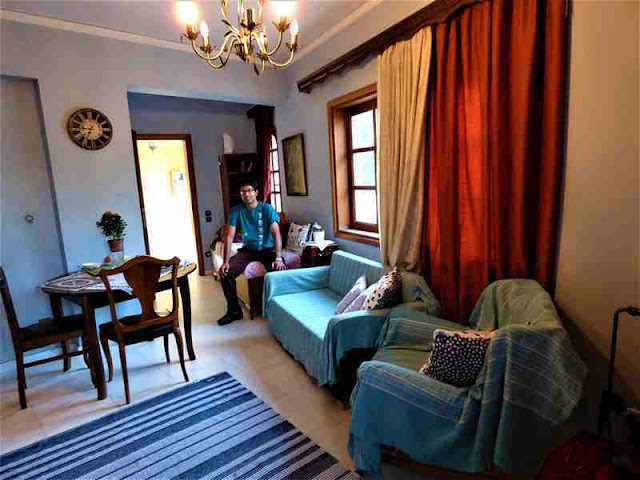



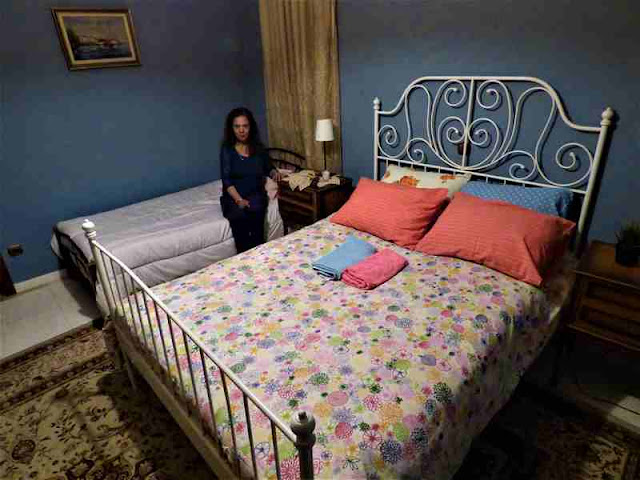





















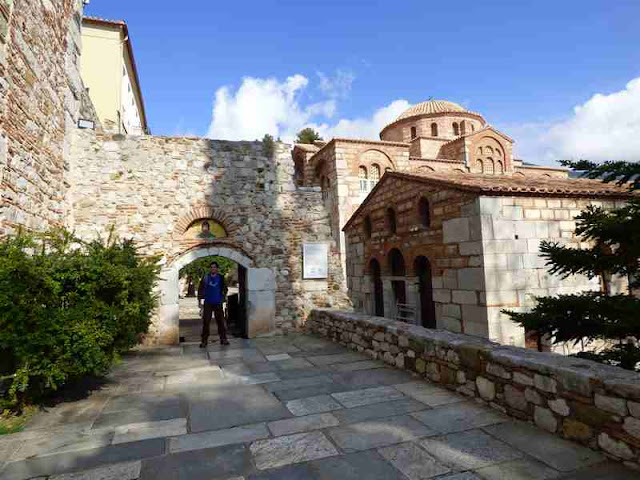


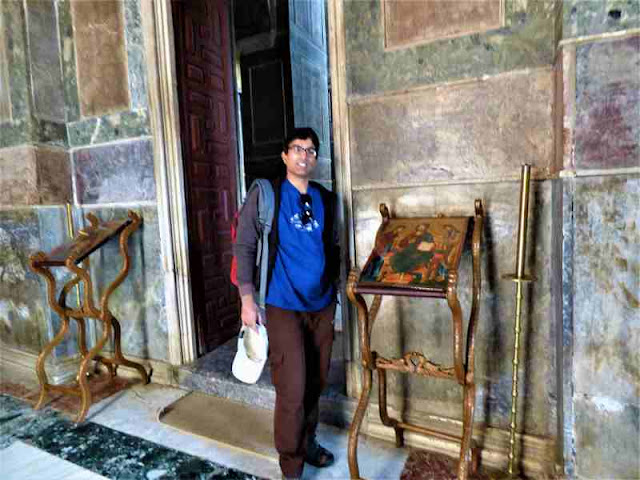





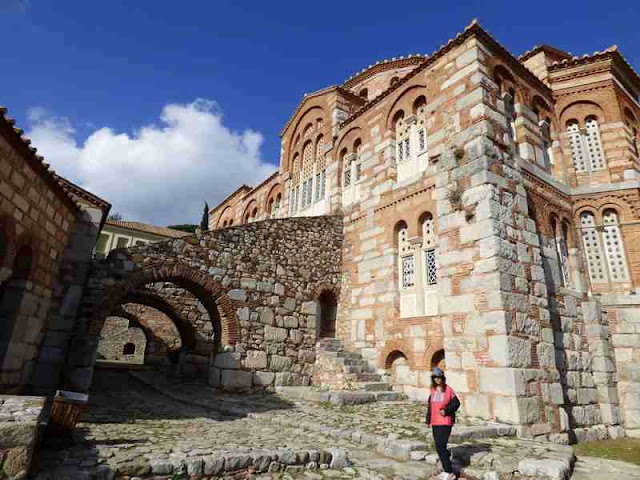









































Terrific report!
ReplyDeleteThanks
Delete